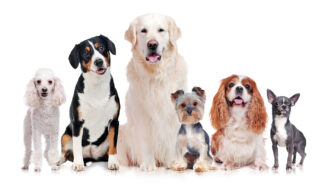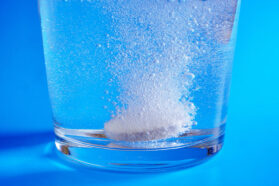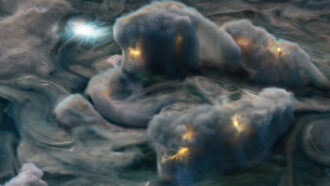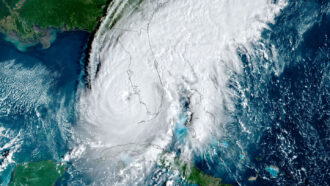All Stories
-
 Plants
PlantsA single particle of light can kick off photosynthesis
In a new experiment with bacteria, a lone photon sparked the process of turning light to chemical energy.
-
 Animals
AnimalsNorthern elephant seals snooze only two hours a day at sea
These marine mammals sleep only minutes at a time on months-long trips at sea.
-
 Earth
EarthScientists Say: Tectonic Plate
Tectonic plates are giant slabs of rock that make up Earth’s outer layer.
-
 Animals
AnimalsExplainer: What is animal domestication?
The difference between a dog and a wolf isn’t looks or genes or even behavior. It’s the relationship these animals have with people.
-
 Materials Science
Materials ScienceThis house is partly made of recycled diapers
After being washed, dried, sanitized and shredded, used diapers were mixed with other materials to make a strong concrete.
-
 Chemistry
ChemistryExperiment: Test the effect of temperature on reaction time
Alka-Seltzer tablets fizzle furiously when dropped into water. Can you make Alka-Seltzer fizz faster or more loudly by changing the water’s temperature?
-
 Space
SpaceLightning dances through Jupiter’s skies much like it does on Earth
Data from NASA’s Juno spacecraft hint that Jupiter’s lightning extends in jagged steps as it does on Earth.
By Nikk Ogasa -
 Physics
PhysicsExplainer: What is chaos theory?
Chaos can help scientists explore subjects from climate change to human brains. Learn about the theory behind this field of science.
By Sarah Wells -
 Animals
AnimalsScientists Say: Coral
Over 4,000 species of fish make their home among the reefs created by these colony-dwelling marine animals.
-
 Computing
ComputingTeen-created software IDs skin conditions, risky drivers and more
Researchers at the 2023 Regeneron ISEF unveiled computer programs to diagnose skin conditions, warn of dangerous driving and translate sign language.
-
 Math
MathMath explains why dense crowds form surprisingly orderly lines
New research into the behavior of moving groups of people adds to decades of study on the wisdom of crowds.
-
 Climate
ClimateExplainer: What is an atmospheric river?
These long-traveling storm systems bring moisture to many parts of the world. Here’s what scientists are learning about them.